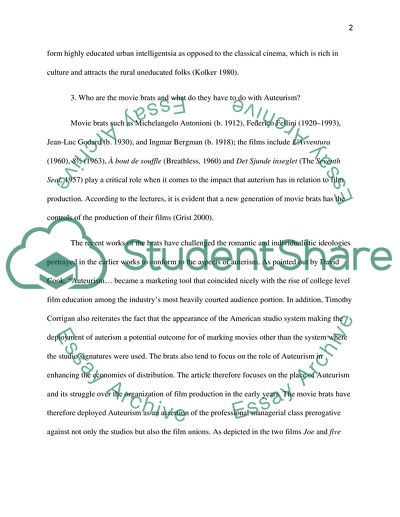Cite this document
(“Difference between a Metteurs-en-Scene and an Auteur Essay”, n.d.)
Retrieved de https://studentshare.org/visual-arts-film-studies/1610096-answer-all-questions-in-this-section-with-a-sentence-or-two-for-each-please-reference-your-answers-using-at-least-one-dossier-reading-for-each
Retrieved de https://studentshare.org/visual-arts-film-studies/1610096-answer-all-questions-in-this-section-with-a-sentence-or-two-for-each-please-reference-your-answers-using-at-least-one-dossier-reading-for-each
(Difference Between a Metteurs-En-Scene and an Auteur Essay)
https://studentshare.org/visual-arts-film-studies/1610096-answer-all-questions-in-this-section-with-a-sentence-or-two-for-each-please-reference-your-answers-using-at-least-one-dossier-reading-for-each.
https://studentshare.org/visual-arts-film-studies/1610096-answer-all-questions-in-this-section-with-a-sentence-or-two-for-each-please-reference-your-answers-using-at-least-one-dossier-reading-for-each.
“Difference Between a Metteurs-En-Scene and an Auteur Essay”, n.d. https://studentshare.org/visual-arts-film-studies/1610096-answer-all-questions-in-this-section-with-a-sentence-or-two-for-each-please-reference-your-answers-using-at-least-one-dossier-reading-for-each.


